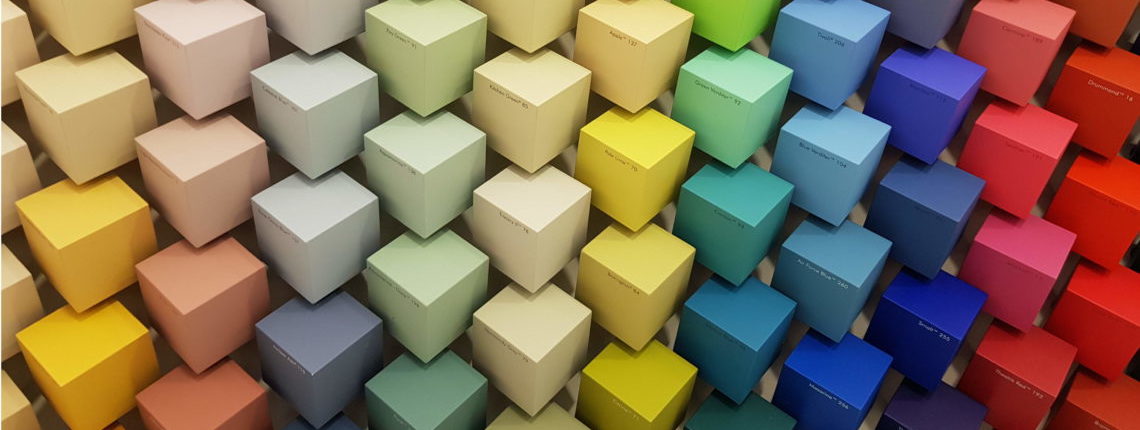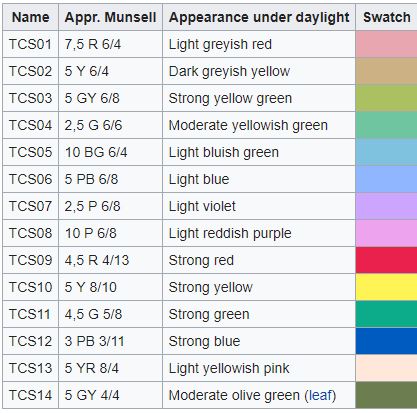

Have you ever brought an item of clothing from a shop only to find it to be a slightly different colour when you go outside? It’s all to do with the ability of artificial lighting to render colours properly.
In this post we help explain one of the fundamental principles of light – colour rendering – and how to know if the light source you choose for your home, shop, restaurant, gallery or office will render colours effectively. It could have a profound effect on the way things look.
Get in touch to find out how we can help with your Lighting Design needs
Not all light sources are made equal. This is because artificial light does not emit a balanced mixture of all colours (wavelengths of light) and that’s where CRI comes in.
So, what is CRI in lighting? Simply put, it’s a measurement showing how light affects the appearance of colour.
Every light has its place on the colour rendering index or CRI for short. It’s given a score (Ra value) on a scale of 1 to 100 showing an average of how accurately it can render 8 pre-defined colour samples (R1 – R8). This is relative to its colour temperature (you can find out more about colour temperatures here) and a natural light source such as the sun.
The 8 colour samples are roughly evenly spaced around Munsell’s colour circle. Unfortunately, these unsaturated pastel colours are not a great representation of typical colours we find in our environment, so these 8 sample colours are often extended to include an additional 6; R9-R14 which include more vivid colours such as deep red (R9) and strong blue (R12). Understanding how a light source will render these ‘extended CRI’ colours is important.
Light scored at the high end of the scale (>90) will render colours more accurately. It’s important to note, an Ra value refers to the average score across only 8 colour samples (R1-R8). The term CRI is often used to describe the Ra value, but this is not always the case. Some manufacturers use the term CRI to describe extended CRI (R1-R14), so when looking at a given CRI value it’s important to understand whether this reflects the extended version or not.

In an ideal world all light sources would have a CRI of 100. The reality is that high CRI LED’s can 1/ have a reduced light output and 2/ make the light source more expensive. Excellent colour rendering is not always required (particularly in warehouses and even exterior lighting schemes). In fact, LED light sources with an Ra of 80 are commonly used in offices or residential spaces and often perfectly acceptable. That said, it’s important to use the best CRI you budget permits, particularly when lighting bathrooms, kitchens, artwork, restaurants and retail spaces.
There has been ongoing debate about the relevance of CRI as a true indicator of defining the ability of an LED to render colours effectively. One reason is because the CRI standard only uses a small number of colour samples. Fittings can achieve a high CRI score (making it an excellent colour rendering product on paper) when it may not actually render many colours well. High CRI values can fool people because each sample colour is given a score out of 100, then the total is averaged. Some colours will score low and most are not even considered. Awareness of this shortcoming is particularly important when looking at LED light sources which in general have a score of 80 or 90 but often score poorly on the R9 value. When specifying fittings on our projects we always look at extended CRI and each individual R value, particularly the deep red R9 score which has a profound impact on the appearance of skin tones and food.
The industry has been trying to agree a new lighting standard that addresses some of the short falls of the current standard but have yet to universally agree a new method. A new metric developed by IES (illuminating Engineering Society) is called TM-30. We are starting to see this being more widely adopted and we would argue it’s a much better approach, for starters it looks at 99 colour samples instead of 8 (or 14). We will discuss TM-30 in more detail in a separate blog.